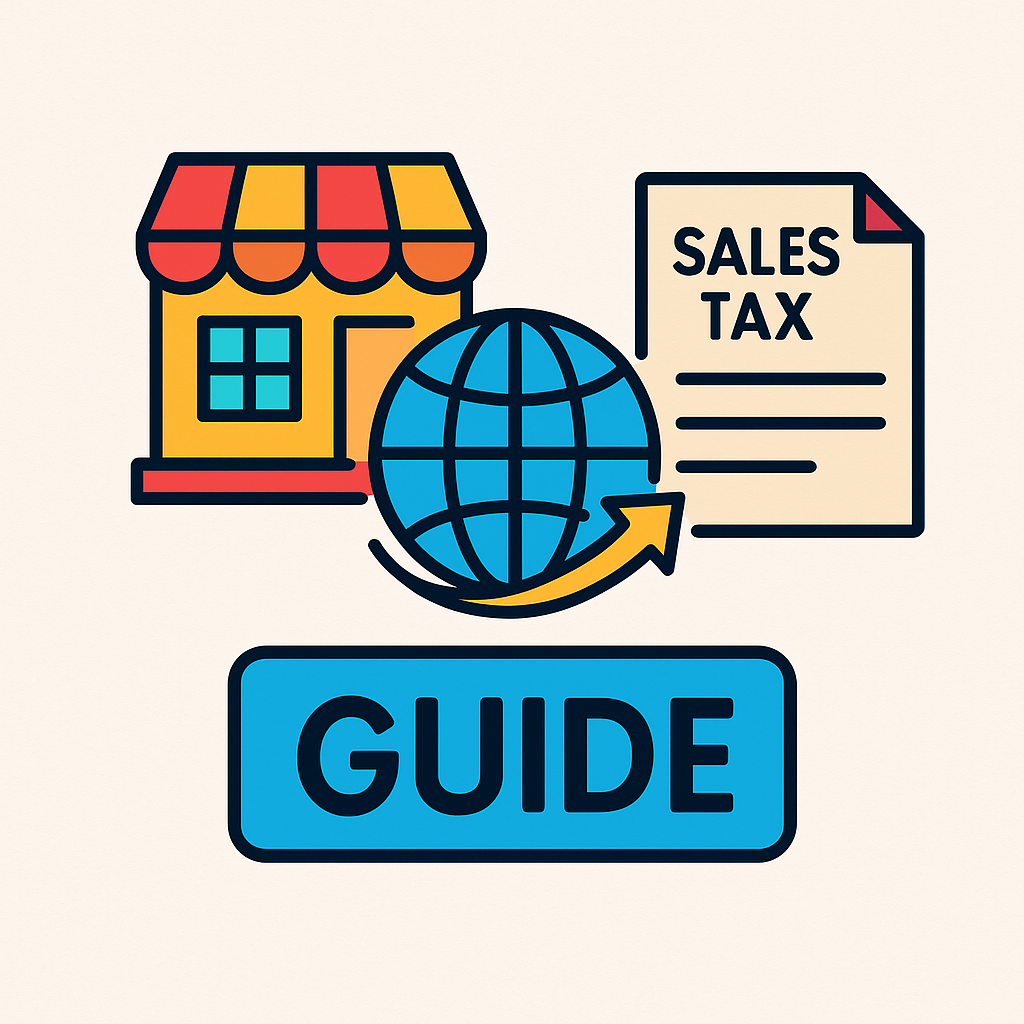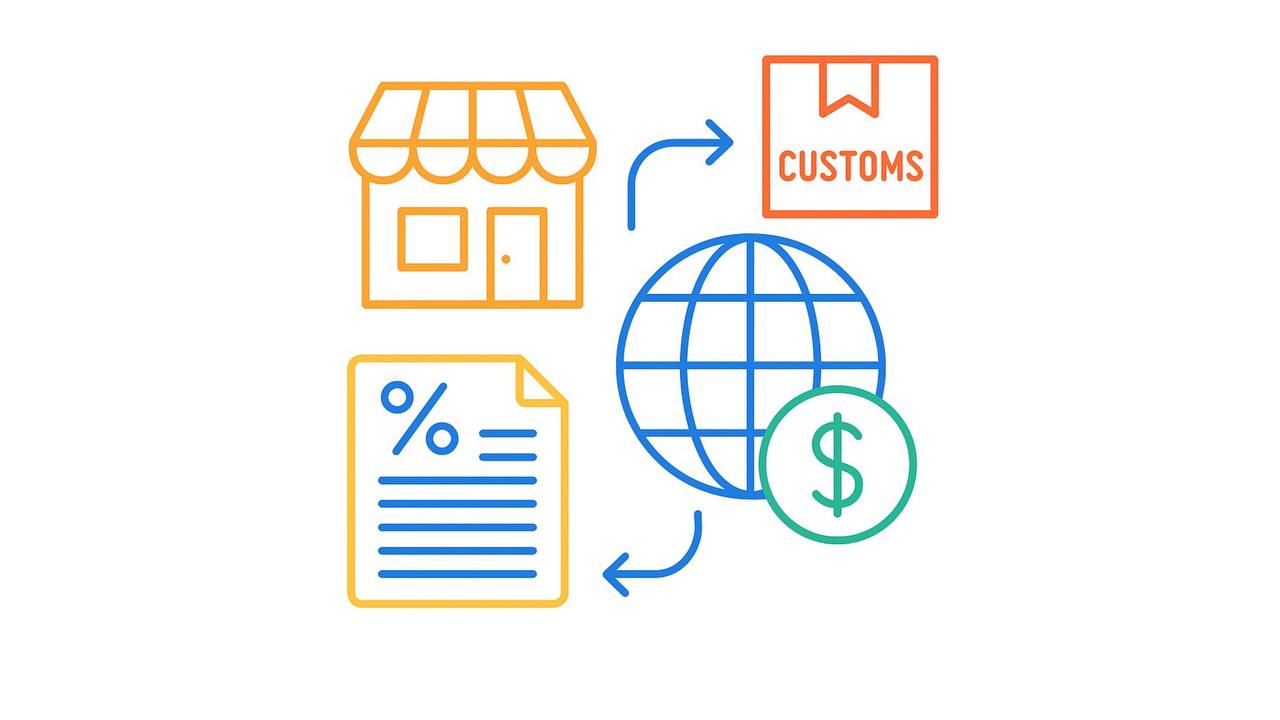Expanding your small business globally is exciting but it comes with new responsibilities. One of the most critical is understanding sales tax for international sales. Regulations, thresholds, and collection rules vary across countries, and getting it wrong can result in penalties or shipment delays.
In this small businesses’ guide to sales tax for international sales, we’ll cover what U.S.-based sellers need before going global: registration, documentation, VAT and GST obligations, logistics, and whether you or your customers should handle taxes.
Understanding Sales Tax for International Sales
In the U.S., sales tax is collected only at the point of sale. But sales tax for international sales often includes additional layers like VAT or GST applied at multiple stages. Small businesses must identify which foreign taxes apply to their products and how to remit them correctly.
Some countries require sellers to charge and pay sales tax for international sales at checkout; others expect the customer to pay import VAT upon delivery. Therefore, before launching abroad, confirm each market’s approach to sales tax for international sales to avoid compliance risks.
Step 1: Register for Sales Tax in Foreign Markets
The first step in managing sales tax for international sales is registration. Each country sets its own threshold for when a foreign seller must register for VAT or GST.
- European Union (EU): Once sales exceed €10 000, you must register through the One-Stop Shop (OSS).
- United Kingdom: Registration required at £85 000.
- Canada: GST/HST registration begins at CAD $30 000.
- Australia: GST registration triggers at AUD $75 000.
Early registration ensures your sales tax for international sales process stays compliant from day one.
Step 2: Research Local Regulations and Documentation
Every jurisdiction handles sales tax for international sales differently. Some demand e-invoicing; others require printed customs documents. Furthermore, certain product categories—like software or e-learning—face special VAT rules.
Before selling, determine:
- What records to maintain for sales tax for international sales.
- Filing frequency and submission format.
- Applicable reduced or zero-rate categories.
Staying organized keeps your sales tax for international sales accurate and audit-ready.
Step 3: Account for Import Duties, VAT, and Local Charges
When calculating sales tax for international sales, remember that import duties and regional fees add extra layers.
For example, U.S. sellers shipping to the EU must consider Import VAT and customs declarations. Marketplaces like Amazon may collect sales tax for international sales automatically.
Two common delivery terms affect sales tax for international sales responsibility:
- DDP (Delivered Duty Paid): The seller pays all import taxes.
- DAP (Delivered at Place): The buyer covers duties at delivery.
Choosing correctly impacts customer satisfaction and your final sales tax for international sales cost.

Step 4: Decide Who Collects the Tax
A vital part of sales tax for international sales planning is identifying who collects and remits the tax.
In some markets, sellers must remit directly; in others, platforms or customers handle it.
Examples:
- The EU requires non-EU sellers of digital goods to collect sales tax for international sales at checkout.
- In Australia, platforms like Etsy manage GST for you.
- Canada’s provinces may need separate registration for sales tax for international sales.
Understanding these differences prevents double taxation and ensures smooth sales tax for international sales reporting.
Step 5: Automate and Monitor Compliance with IST
Manual tracking of sales tax for international sales across dozens of jurisdictions is nearly impossible. Rules change constantly, and missed updates can cost thousands.
That’s where IST steps in. IST automates every step of your sales tax for international sales process, from threshold tracking and filing reminders to invoice generation. It supports both manual uploads and API integrations.
With IST, you can:
- Monitor sales tax for international sales thresholds in real time.
- Generate compliant VAT/GST reports automatically.
- Prevent late filings and underpayments.
Automation ensures your sales tax for international sales remains accurate, efficient, and fully compliant worldwide.
For deeper insights, review the International VAT Guidelines
Final Words
Going global brings opportunity and complexity. From registration to import duties, mastering sales tax for international sales is essential for sustainable growth.
By automating calculations and compliance through IST, small businesses gain confidence and save time. Whether you sell to Canada, the EU, or Australia, IST ensures your sales tax for international sales is handled correctly, every time.
Simplify your sales tax for international sales management today. Get started with IST and stay compliant as you expand worldwide.

Leave a Reply